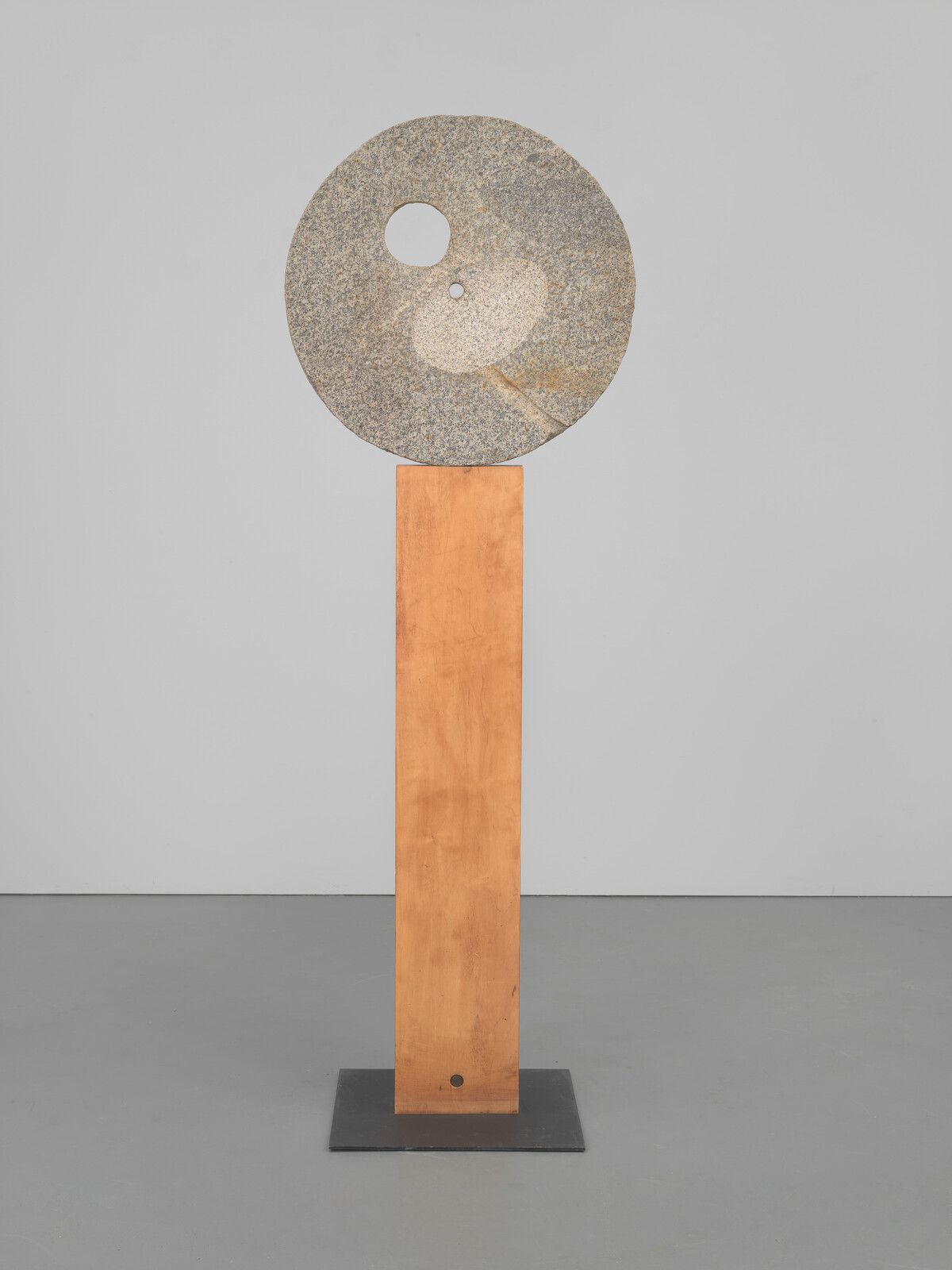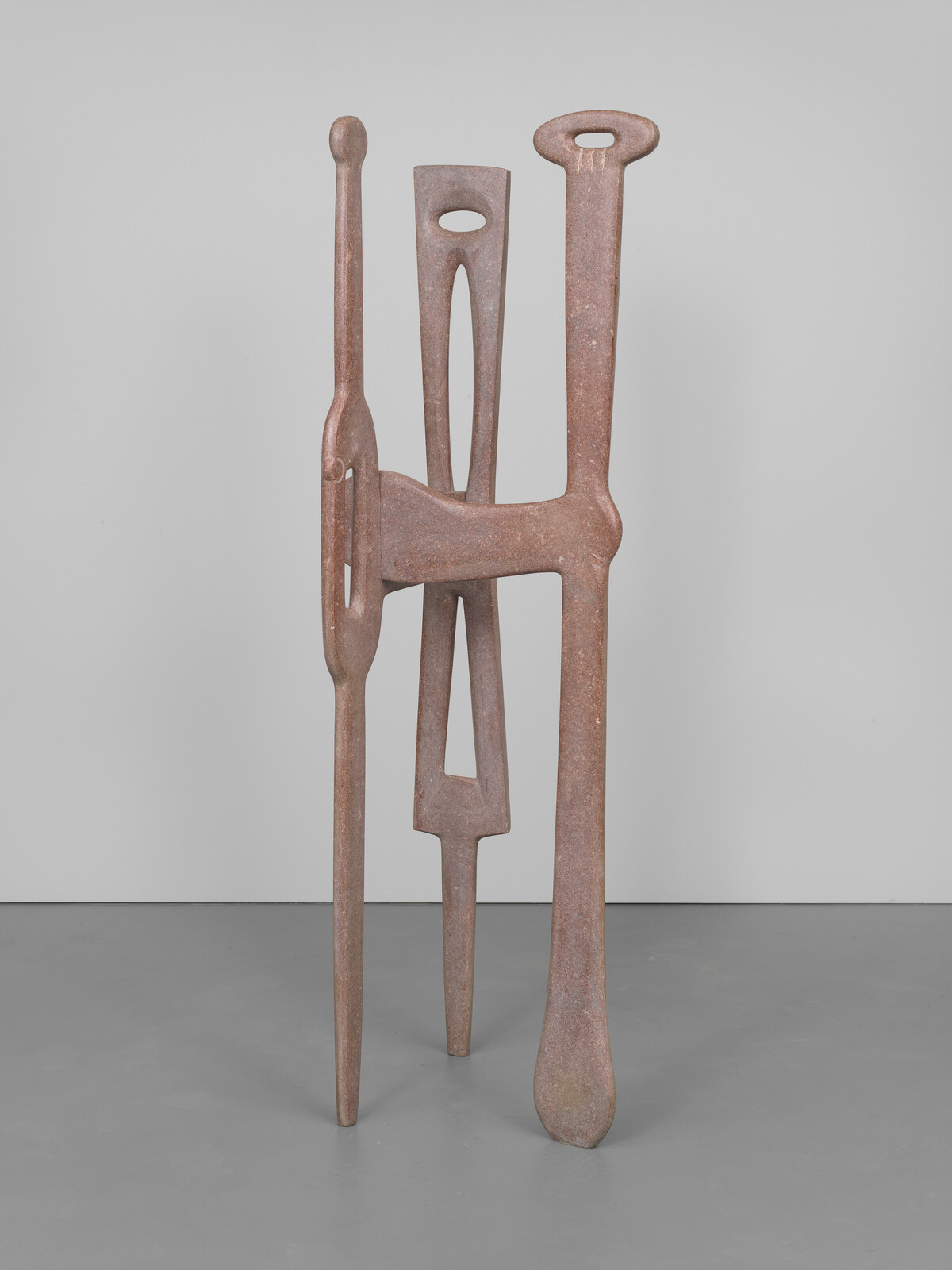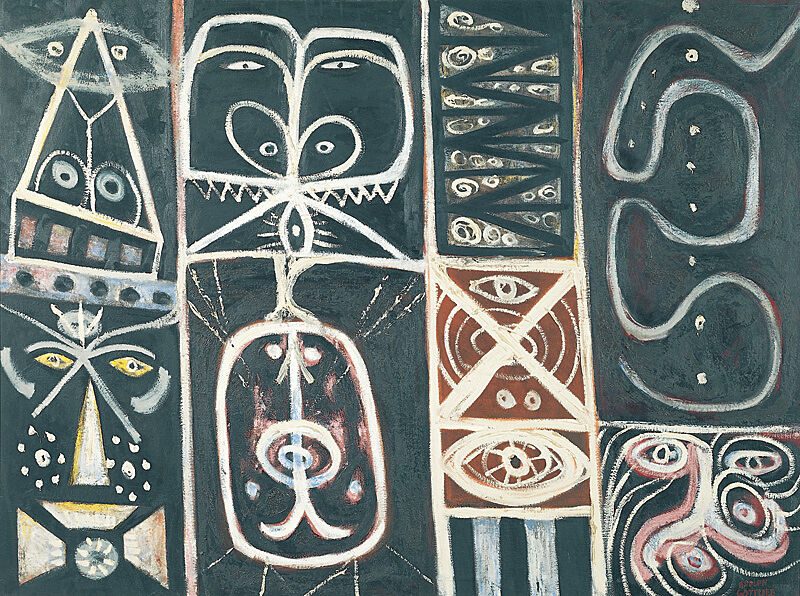Isamu Noguchi, The Gunas, 1946
July 10, 2012
0:00
Isamu Noguchi, The Gunas, 1946
0:00
Narrator: Isamu Noguchi made this sculpture from three interlocking pieces of carved marble—each one of which must be there in order for the work to remain upright. The composition thus seems somewhat precarious, but also wonderfully integrated.
Noguchi drew the title of the work, The Gunas, from South-Asian Indian literature. The term refers to the three aspects of humanity that make us complete—purity, passion, and darkness.
The sculpture comes from 1946—just after the end of World War II. This was an especially trying time for Noguchi, who was born in the United States to a Japanese father and American mother. After the bombing of Pearl Harbor, he fought to prevent the internment of Japanese Americans in prison camps. Failing in this mission, he had himself voluntarily interned in one of the camps for several months. After his release he received a deportation order, and remained in the country only after a legal battle.
Not surprisingly, the work that Noguchi made during the war tended to be very pessimistic—Surrealist sculptures exploring death and destruction. Here, then, is a kind of monument to reconciliation—but one that retains the darkness along with the purity and passion.
In Signs & Symbols.



